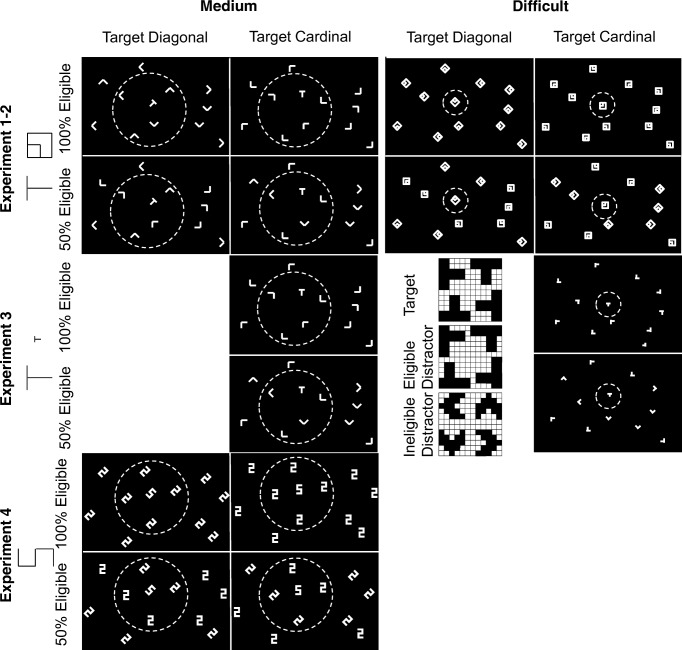Fig. 1.
Setup for the experiments. Participants always knew the set of lines (cardinal/diagonal) used to draw the target and their exact configuration. Experiments 1 and 2: Medium search was for a T amongst Ls. Difficult search was for a configuration of squares. Experiment 3: Both medium and difficult search were for a T amongst Ls. The inset shows the detail of the difficult search items used in Experiment 3. Inset Top: Target (all participants were assigned one of the four versions). Inset Middle: Eligible distractors (all four versions appeared in each display). Inset Bottom: Ineligible distractors (all four versions used in each 50% eligibility display). Experiment 4: Medium search for a 5 amongst 2s. When eligibility was 100% all items in the display were created with lines from the same set as the target. When eligibility was 50%, half of the search items came from the different set. Note that with the exception of Experiment 4, the distractors always had various configurations (even in 100% eligibility). The dotted circle plotted around the target depicts the estimated size of the FVF for the task in question (Young & Hulleman, 2013)

